Hello, how is your month of August going? It’s still pretty hot here in Madrid, and I’m still in PT for my ankle, but thankfully, things are improving on both fronts. Today I’m going to talk about a road trip we took in mid-July.
What does it mean to be human?
In college I took an anthropology class and ever since then I’ve been fascinated by discoveries of very old humans. So, when I heard that this year the oldest human fossil in Europe had been discovered in Spain, I made a plan for us to go visit the site.
Atapuerca is the name of the town, just outside of Burgos, where some of the most important archaeological discoveries have been made. It’s a two-and-a-half hour drive north of Madrid—perfect for a weekend excursion. I called and made reservations for the guided tour of the dig site and the museum, just 6 Euros (about $6) each.
Seeing as we were renting the car for a few days (and we are still happy about our decision to live without a car,) we decided to explore some parts of Madrid where unusual birds had been seen. And, perhaps not surprisingly, it was my new birding friend Victor who suggested some good sites.
First we headed south to where a Western Reef Heron had been spotted for the last several weeks. This heron is normally an African resident and the few occurrences of it wandering north onto the Iberian peninsula had always been on the coast. This was the first time one had shown up in Madrid and birders from all over Spain (and the resto of Europe!) were making the trek to go see it.
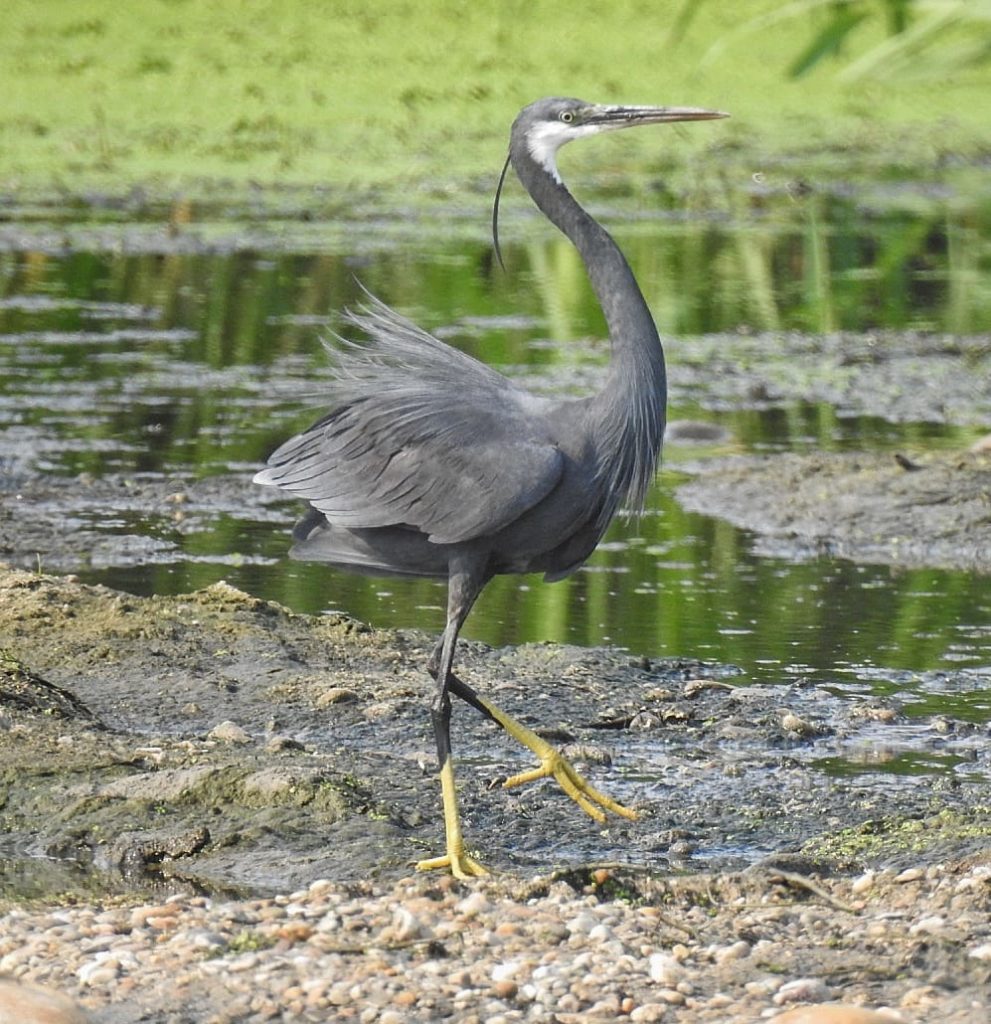
From there we headed to find another rarity: Long-eared Owls. They don’t really have long ears, of course, as owls don’t have pinnae, the fleshy part of the ear that sticks out from our heads. But they have tufts of feathers that resemble ears, and these owls have very long tufts. My husband led the way across the sun-bleached park to the exact tree that Victor had pinned on a map for us, and there they were, the cutest darn things, much smaller than the Eagle Owl, staring down at us.
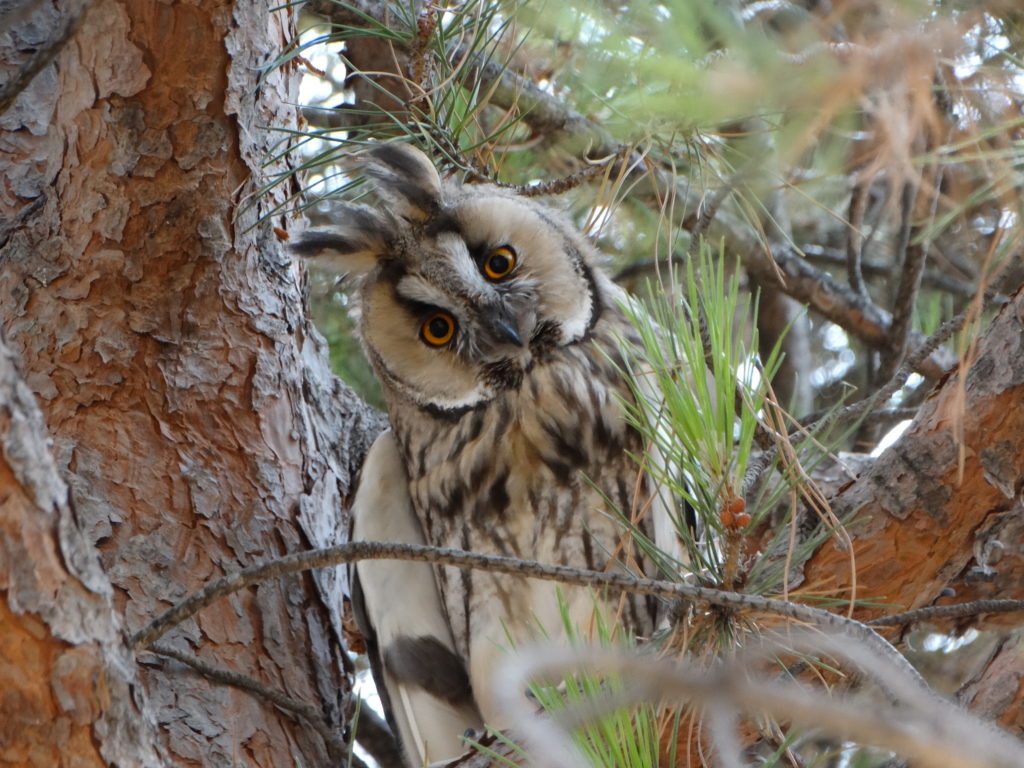
After that we headed north, stopping along the way for one more bird: the endangered Egyptian Vulture. Now, vultures aren’t the cutest birds in the world, sure, but this one was very handsome, mostly white with starkly contrasting black borders on its wings, a bright lemon-yellow face and a diamond- or wedge-shaped tail. Egyptian vultures, rather smaller than the other 3 types of vultures we have in Spain, have a pretty wide range, breeding from Spain eastward over the rest of eastern Europe and Asia and into India. But their numbers are very low and declining, and central Spain is about the only place in the world where numbers are slowly increasing.
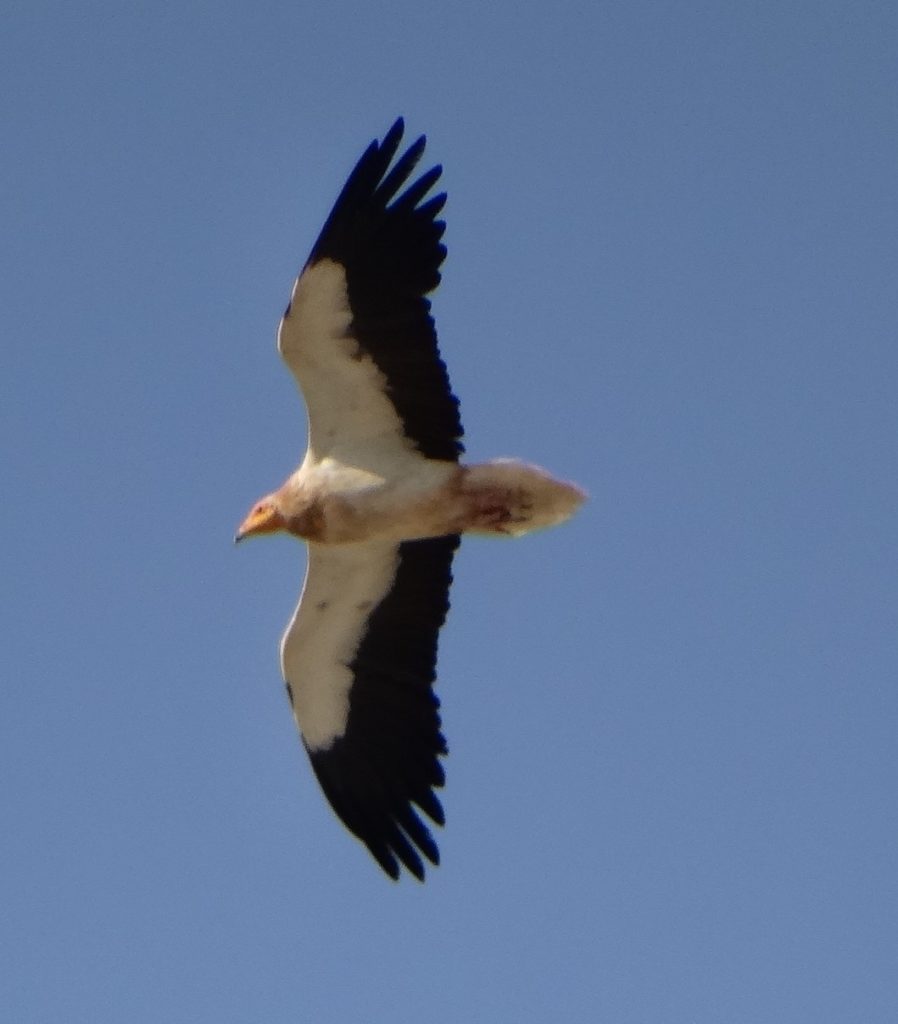
Mid-July is probably not the best time of year to visit an outdoor excavation site, what with the triple digit temps, but it wasn’t too bad as the nights got down into the 50s and so overall, it was much cooler than in Madrid.

And it was so worthwhile to see the site where 5 species of humans (4 of which are extinct) have been found so far! We had a terrific guide who was patient with our group’s endless questions. She explained how the Atapuerca mountains had been blasted with dynamite in the 1800s to open the way for a train to pass through, but with so many limestone caves, the area had eventually been deemed too unstable to support the trains, so the project had been abandoned.
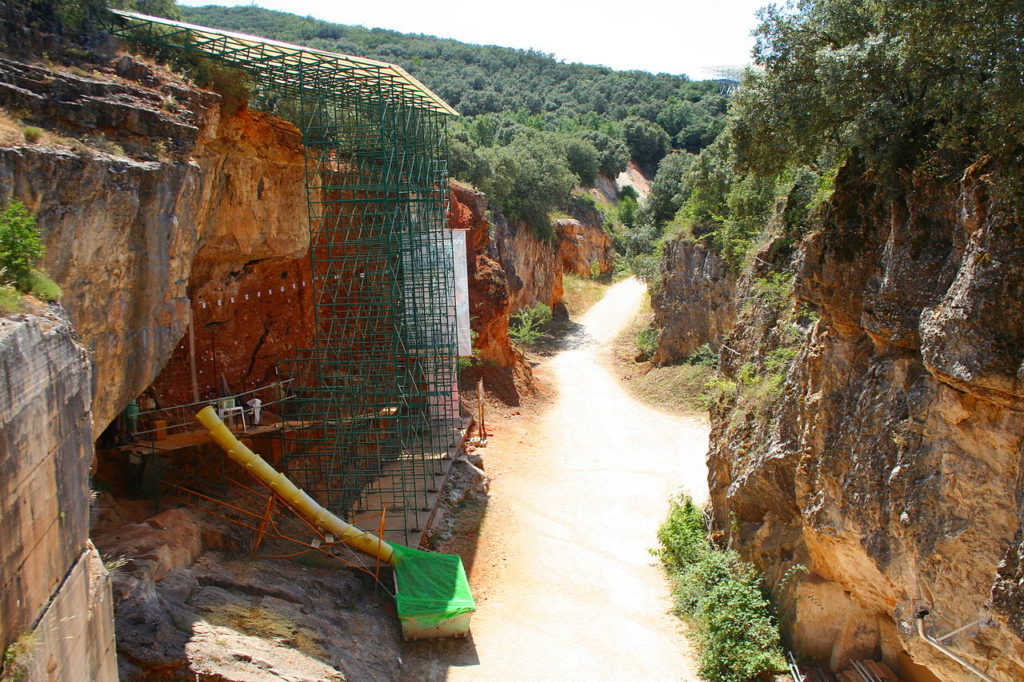
Then, in the 1970s, a graduate student studying Black Bears in León heard rumors of people in the town of Atapuerca wearing necklaces made of bear incisors. So, he came to the Atapuerca and the townspeople told him they had found the bear teeth in old caves that had been opened up by the train company a hundred years ago. The graduate student went to explore the caves himself and, along with lots of bear teeth, he also found a jawbone that was clearly not a bear’s. It was in a deeper, darker cave which the townspeople had not explored. He took the bone to his professor who correctly identified as being human, and hundreds of thousands of years old!
As you probably know, all humans evolved in Africa. And then, about half a million years ago, Neandertals, our closest human relatives, came to live in Europe and parts of Asia, where they continued living until about 20,000 years ago. But, until the discoveries at Atapuerca, what we didn’t know is that there were humans in Europe, pre-Neanderthals and even earlier humans, living in Europe for over a million years!
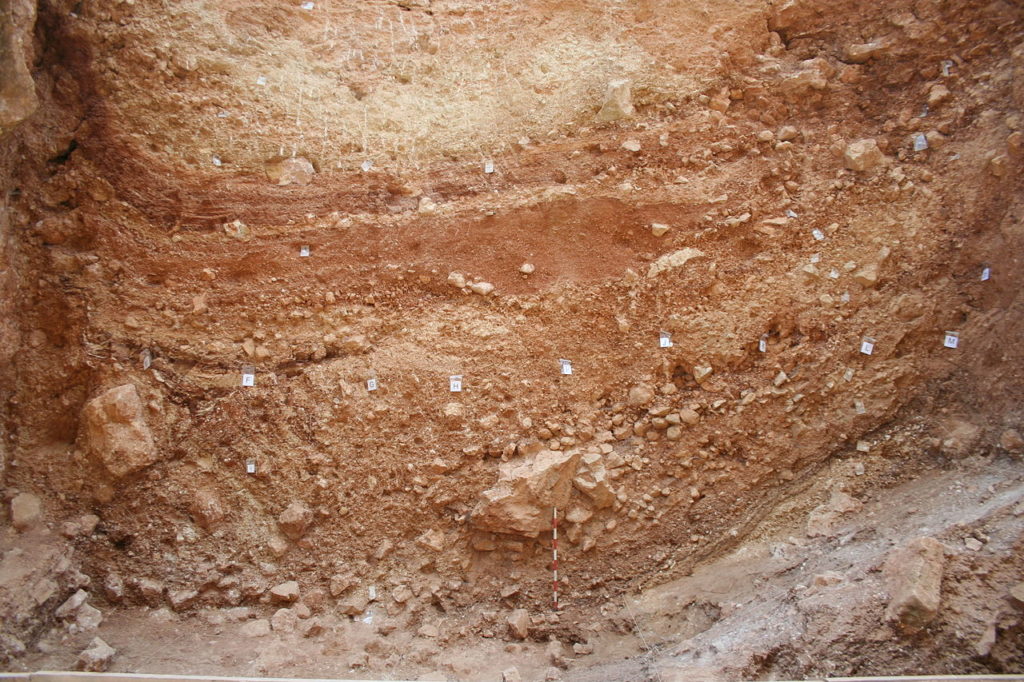
The oldest bone discovered, the one they found this year, is between 1.2 and 1.4 million years old. It’s part of a face—a flat face with human-shaped teeth. And from the placement of the hole for the spinal chord at the base of the skull, it’s obvious that that individual also walked upright. At first they assumed it was a young boy, and an artist made an illustration of what he may have looked like. But just a few weeks ago they were able to recover enough DNA to confirm that it was actually a girl. (So now the artist will need to make changes to the picture!)
The other bones discovered in the different layers and caves in the area—and there are about 200 dig sites—show that at least 5 species of humans have lived on this land, from modern humans to Neanderthals to pre-Neandertals to a couple more as yet un-named species. They’ve also found cave paintings and stone tools. And plenty of animal bones as well, including now extinct rhinoceros, horse, and elephant species, all with butcher marks on their bones!
One surprising find is that some of the oldest human bones also show butcher marks made by stone tools. So, over a million years ago humans were cutting up humans. Was it cannibalism? Was it in battle? We may never know.
What does it mean to be human? These other humans were not our species, but they were still recognizably human. They walked on two feet, made clothing and used fire, made stone tools, hunted in groups and must have used language.
In one of the caves the skeletons also told some interesting stories of events that took place a million years ago, among the early humans. One story is a young man who had been hit in the face by a heavy object—a stone? A kick from a wild animal? In any case, the trauma was such that his mouth and cheek and eye socket had been crushed inward. But, the person did not die of that injury—at least not immediately. Scarring of the bone shows that he was able to live at least 4 months, perhaps as much as a year after the injury. He would not have been able to chew and would have been blind in one eye, so his family must have taken good care of him to keep him alive, probably even chewing his food for him before giving it to him to swallow.
Another skeleton was that of a young girl, probably 8 years old when she died. Her fossils show that she was pretty badly handicapped from birth defects and would certainly not have walked well. But she lived with people who were very nomadic, travelling 25-30 kilometers a day and only making temporary camps. So the fact that they kept her alive for that long, probably carrying her from camp to camp following the animals they hunted and taking care of her until she eventually succumbed to death, is pretty extraordinary.
Both of these examples speak to kindness and compassion over a sustained period of time that our ancestors showed to one another before we evolved into modern humans. So is that what it means to be human?

Anyway, I hope you enjoyed this account of our trip to the World Heritage Site of Atapuerca. And as always, please check out (and tell someone about) my novels here.



2 comments
Fascinating! Always enjoy what you share. 🙂
Thank you for sharing the history and pictures. The owl is so cute!